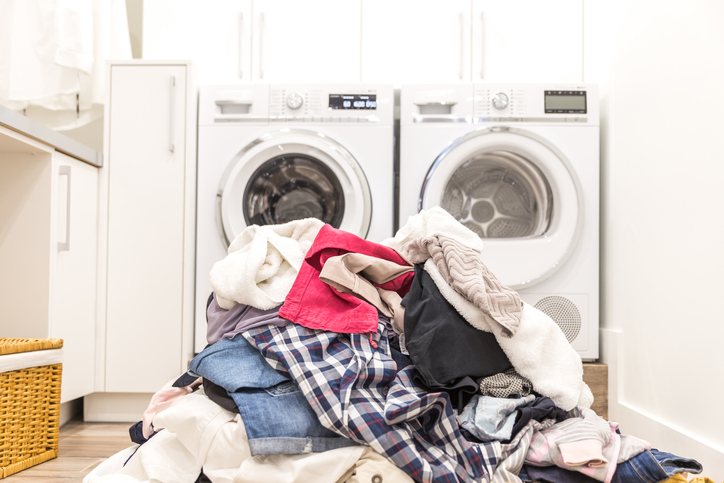
Sep 9, 2021 | Energy Efficiency
Your home’s indoor air quality is the quality of the air within and around your home in relation to you and your family’s health and comfort. By understanding and improving your home’s air quality, you can improve not only your health and quality of life but also save on your energy bill.
The importance of indoor air quality for your family.
Indoor air pollution can come from many different sources, including excess moisture, central heating, and cooling systems and humidification devices, cleaning materials, and outside sources. If your home has air pollution, it can cause headaches, dizziness, fatigue, and irritation of the eyes, throat, or nose. If these symptoms occur, you may want to explore ways to improve indoor air quality in your home.
Improving indoor air quality.
Using a portable air cleaner or upgrading the air filter in your HVAC system can help improve indoor air quality. Air purifiers or air sanitizers are designed to filter the air in a single area. Your central furnace or HVAC filters are designed to filter the air throughout a home. Both are good for reducing air pollution; however, they can’t remove all pollutants. Dehumidifiers can also help improve indoor air quality by keeping humidity levels at a healthy level.
One way to freshen up your home’s air quality is to check on the status of these ventilation systems and appliances. Proper maintenance and replacement, when necessary, can help control humidity while reducing dust and particles that aggravate asthma and allergies. Doing so can also help you save on your energy bill too: A dirty HVAC filter slows down air flow and makes your system work harder—wasting energy. A clean filter prevents buildup in the system and can lead to expensive maintenance or early system failure. Upgrading from an older HVAC system to a new, ENERGY STAR® system like a ductless mini-split uses 60% less energy than standard resistance-based heating systems and cuts cooling costs by 30%.
We offer rebates to help you save when you’re ready to upgrade: Get up to $25 off ENERGY STAR certified dehumidifiers, up to $450 off ENERGY STAR certified air-source heat pumps, and a rebate of $400 per outdoor unit for ENERGY STAR certified ductless mini-splits.
Keep outside air out with proper sealing.
Good ventilation is important to indoor air quality and control over when and how much air is circulated between the inside and outside of your home. Identifying and sealing areas where the air is leaking in and out of your home is the first step to gaining that control. Our in-home audit includes a blower door test, which identifies the air leakage in your home. We also provide up to $200 in rebates for air sealing. The biggest savings come over time—sealing air leaks can help you save 10-20% on your energy bill.
We hope you now have the tools and knowledge to breathe easier and save money on your home’s energy costs.

Aug 16, 2021 | Energy Efficiency
When the summer heat is at its highest, your energy bill can take quite a hit. One of the best ways to keep your energy costs down is to focus on the ways you use water. Water heating accounts for an average of 13% of a home’s energy costs.
Tip 1: Reset With a Cold Shower
When it’s just way too hot outside, a quick cool-off in the shower is an easy, energy-efficient way to lower your body temperature. Keeping it short and cool gives your water heater a break and can help lower energy costs. Bonus: Cold showers promote better blood flow, making you feel more awake, support healthy hair and skin, and help with sore muscles.

Tip 2: Replace Old Water Heating Equipment
The last thing you need during a heatwave is a broken appliance. Older water heaters have a lifespan of about 10 years. Stay up to date with regular maintenance and replace older models with new, energy-efficient ones. If you plan to upgrade, consider installing a heat pump water heater, which can cut energy costs for water heating in half. We also offer a $400 rebate on ENERGY STAR® heat pump water heaters.

Tip 3: Lower Your Water Heater Temperature
Since scorching-hot water isn’t typically necessary, check to see what temperature your water heater is currently set to. If you lower your water heater to 120 degrees Fahrenheit, you can save energy and money and reduce the risk of scalding.

Tip 4: Wash Clothing With Cold Water
Another good way to avoid using hot water and save more on your energy bill is to wash your clothes on a cold setting. About 90% of the energy used in washing machines comes from water heating.

Let us know if these tips worked for you and comment below.
Looking for additional info?

Jul 22, 2021 | Energy Efficiency
When the temps go up, the energy costs often do too. Here are a few handy tips to save energy and save money. Even small changes can collectively help you out during the heat of summer.
Tip 1: Avoid the Oven

Cooking with a conventional oven can add unwanted heat to your house, forcing your A/C to work harder. Do more of your cooking with a microwave or slow cooker to keep the kitchen cool. Better yet, use the summer heat as an excuse to fire up the old backyard barbeque. Outdoor grilling is a summertime tradition for a reason—you can cook delicious meats and veggies while keeping the heat outside.
Tip 2: Energy Recon

A home energy monitor can give you real-time data on your energy usage. You can determine which of your appliances are gobbling up the most energy. You can conduct experiments to help you save energy. Also, you can monitor your usage for a certain time period. When you see how and when you’re using energy, you can find ways to save.
Tip 3: Cool Your Bulbs

Switching to LED lightbulbs can help you save in multiple ways. ENERGY STAR® certified bulbs use at least 75% less energy and last 25 times longer than traditional incandescent bulbs. Plus, LEDs don’t give off as much heat as traditional bulbs, so they can help keep cooling costs down.
Tip 4: Throw Some Shade

During the dog days of summer, window shades can really help your energy consumption. In rooms without direct sunlight, you can pop those shades up and use the sun to light this part of your home. In rooms with direct sunlight, do the opposite: Drop your shades to keep the room nice and comfortable.
Tip 5: Location. Location. Location.

Be mindful of where you place appliances that give off heat. When placed near a thermostat, lamps with incandescent bulbs and some TVs can make it difficult for your thermostat to get a good reading. This means your A/C might work harder than necessary to keep you comfortable.
So there you have it. Hopefully these tips and tricks will help you—and your energy bill—beat the heat during these summer months. Discover even more ways to save with PPL.

May 13, 2021 | Safety and Security
With the weather warming up, yard sale season is fast approaching, and advertisers are also in search of outdoor space to help spread their message. It’s important to remember that utility poles are off-limits. Attaching signs, advertisements, flyers and other materials to utility poles can cause potentially serious safety problems.
What makes posting on utility poles unsafe? Items are typically attached with nails or staples, which can injure line workers who may have to climb the pole to make a repair. They also can puncture critical safety gear, like rubber gloves and sleeves. Even a tiny hole in this protective equipment can present a serious and potentially deadly threat.
Posting on utility poles is also illegal. State law makes it a summary offense to drive a nail or tack, or attach any metal or hard substance, into an electric utility pole.
We’re asking for your help. If you’ve placed something on one of our wooden poles, please take it down and keep our crews’ safety in mind. Thank you!

Apr 1, 2021 | Energy Efficiency
Laundry can be daunting, right? It seemingly never ends. Since the average household requires at least a few loads per week, it’s worth taking a closer look and finding ways you can save on your laundry-related electricity costs.
If you’re in the market for a new washer, there are efficient options available that will help you save over the lifetime of the unit. But if you prefer to hang on to your current machine, there are still plenty of ways to save energy and money:
Wash with cold water. Using warm water instead of hot can cut a load’s energy use in half, and using cold water saves even more. Cold water detergents are helpful to ensure items get clean. Be sure to use high-efficiency detergents when required by the manufacturer.
Wash full loads. You washer uses approximately the same amount of energy no matter the size of the load.
Dry right-sized loads for your machine. If your dryer is too full, it will take longer and use more energy for your clothes to dry. Loads that are too small also can take longer to dry, plus you spend more per item when running the dryer for only a few things.
Air dry when you can. Spring is here! And with sunshine and warmer weather you can hang laundry outside or use a drying rack to avoid powering up the dryer.
Clean the lint filter on your dryer. The dryer will run more efficiently and safely.
We hope these tips make your laundry routine more efficient and less of a chore!















